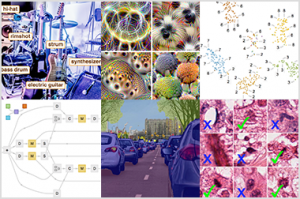 Machine Learning & LLMs
Machine Learning & LLMs
Machine learning, neural networks and large language models (LLMs) are important components of modern AI systems. Learn about popular machine learning paradigms for classification, regression, clustering and anomaly detection with the help of fully automated and customizable functions that handle everything from feature extraction to performance evaluation. See how you can select pre-trained neural net models from a repository to apply to your own data, customize existing models or build models from scratch with the help of a symbolic neural net framework. Make use of Chat Notebooks as well as powerful built-in functions for calling LLM functionality and allowing LLMs to access Wolfram Language tools.
These courses cover many different topics, starting with introductory machine learning concepts and Wolfram Language built-in functions and diving into the complexities of building and training neural networks. Earn course completion certificates and prepare for Wolfram Language Level 1 certification.
Upcoming Events
-

JAN 5–16 | Online
Wolfram Neural Networks Boot Camp
Learn about neural networks, how you can use pre-trained networks and how to build and train your own models in this two-week online boot camp. Interact with Wolfram experts; explore ways that AI and deep learning can be applied to text, image and audio analysis; and earn Wolfram certifications.
-

FEB 24–MAR 10 | Online
Exploring AI Foundations with Wolfram Tools
This three-part course sequence guides you in using the computational power of Wolfram technologies as a foundation for reliable AI systems. Discover concepts in machine learning, explore the Neural Net Repository and learn to use LLMs.
-

Mar 3 | Online
Introduction to Machine Learning in Wolfram Language
Gain experience using machine learning superfunctions available in Wolfram Language. This course demonstrates how to perform supervised and unsupervised machine learning tasks and also covers regression, classification, clustering and anomaly detection. Earn a certificate of course completion.









